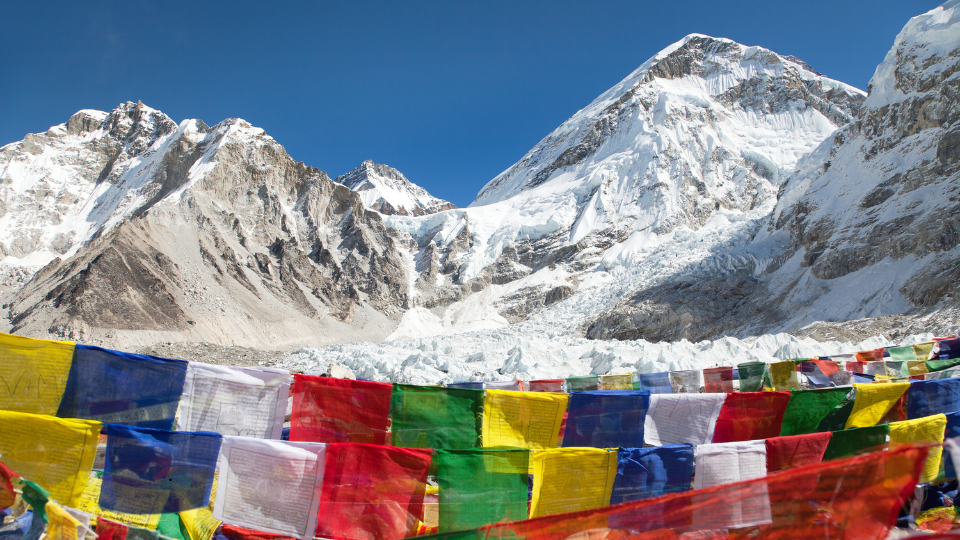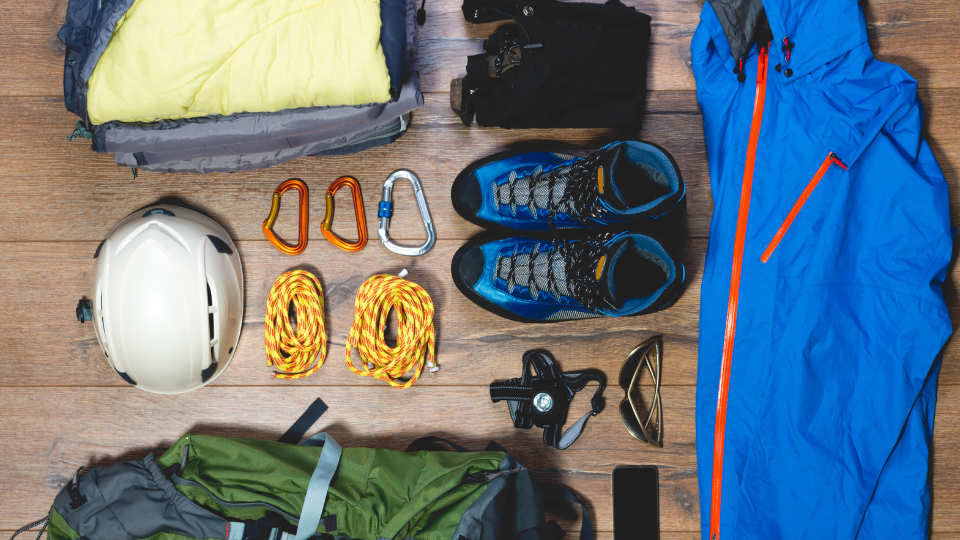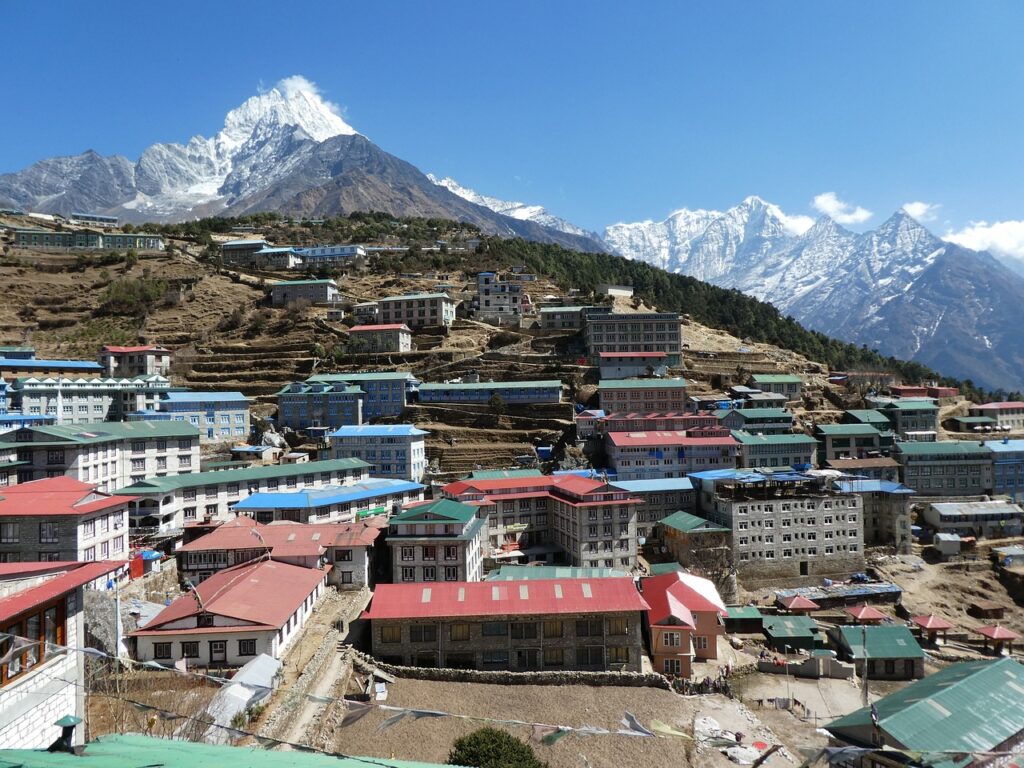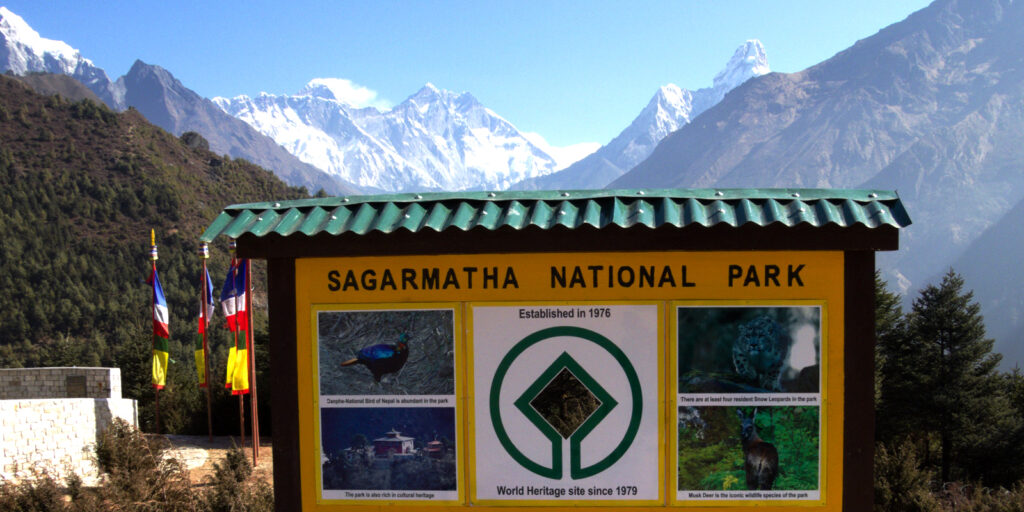Conquer the Mountains: A Beginner’s Guide to the Everest Base Camp Trek
There’s a realm where the air is crisp, the vistas are breathtaking, and the spirit of adventure beckons – welcome to the Everest Base Camp Trek. This enchanting journey through the heart of the Himalayas is not only a test of endurance but also a chance to immerse yourself in the rich culture of the Sherpa people and the stunning landscapes of Nepal. As a beginner, the idea of conquering the world’s highest mountain may seem daunting, but with the right guidance and preparation, it becomes an achievable dream. In this guide, we’ll equip you with everything you need to know, from essential gear to acclimatization tips, ensuring that you can embark on this iconic trek with confidence. Get ready to lace up your hiking boots and discover the formidable beauty of the Everest region as you take your first steps toward adventure.

Table of contents
Why Choose the Everest Base Camp Trek?
Preparing for Your Trek: Essential Gear and Supplies
Understanding the Trekking Route and Itinerary
Acclimatization: Staying Safe at High Altitudes
Physical Fitness: Training for the Trek
Navigating Permits and Regulations
Choosing the Right Trekking Company
Tips for a Successful Trekking Experience
Why Choose the Everest Base Camp Trek?
The Everest Base Camp Trek is not just a journey; it’s an emblem of human perseverance and a testament to the allure of the world’s highest peak. This trek offers an unparalleled experience, bringing you face-to-face with some of the most breathtaking landscapes on Earth. The panoramic views of towering snow-capped peaks, the serene beauty of glacial rivers, and the unique flora and fauna of the Khumbu region create a mesmerizing backdrop for your adventure. For many, the Everest Base Camp Trek represents an opportunity to challenge personal limits and experience a profound connection with nature.
Moreover, this trek is a cultural voyage. As you pass through traditional Sherpa villages, you gain insight into the lives of the resilient and hospitable people who call the Himalayas home. The trail is dotted with monasteries, prayer flags, and mani stones, reflecting the deep-rooted spirituality and traditions of the Sherpa community. Engaging with the locals, learning about their customs, and perhaps even participating in a prayer ceremony at a monastery can be as enriching as the natural beauty that surrounds you.
Choosing the Everest Base Camp Trek also means being a part of a storied legacy. Following in the footsteps of legendary mountaineers like Sir Edmund Hillary and Tenzing Norgay, you get to experience the thrill of walking the same paths that led them to the summit of the world. This trek is not just about reaching a destination; it’s about the journey itself, the challenges you overcome, and the memories you create along the way. Whether you’re an experienced trekker or a complete novice, the Everest Base Camp Trek offers something uniquely rewarding.

Preparing for Your Trek: Essential Gear and Supplies
Preparation is paramount when embarking on the Everest Base Camp Trek. The right gear and supplies can make the difference between a comfortable trek and a challenging ordeal. First and foremost, investing in a good pair of trekking boots is essential. Your boots should be well broken-in, waterproof, and provide ample ankle support. Blisters and sore feet can quickly turn an exciting adventure into a painful experience, so prioritize footwear.
Layering is key to managing the varying temperatures you’ll encounter. Start with moisture-wicking base layers to keep sweat away from your skin. Add insulating layers such as a fleece or down jacket for warmth, and finish with a waterproof and windproof outer shell. The weather in the Himalayas can be unpredictable, and it’s not uncommon to experience rain, snow, and intense sun all in one day. Packing a quality pair of gloves, a warm hat, and a buff for your neck and face will also help protect you from the elements.
Other essential items include a sturdy backpack, a sleeping bag rated for cold temperatures, and trekking poles to help with balance and reduce strain on your knees. A headlamp with extra batteries is crucial for early starts or late finishes, and a water purification system ensures you stay hydrated without relying on bottled water. Don’t forget to pack a first aid kit with basic medications, blister treatment, and altitude sickness tablets. Finally, bring a reliable map, a guidebook, and a journal to document your journey. Proper preparation ensures that you can focus on the experience and the awe-inspiring scenery without unnecessary discomfort.
Understanding the Trekking Route and Itinerary
The Everest Base Camp Trek typically begins with a thrilling flight from Kathmandu to Lukla, a small town perched on the side of a mountain. This flight is an adventure in itself, offering stunning views of the Himalayan range. Upon landing in Lukla, your trek begins with a relatively gentle hike to Phakding, where you’ll spend your first night acclimatizing to the altitude.
From Phakding, the trail continues to Namche Bazaar, the gateway to the high Himalayas. This bustling town is a major hub for trekkers and mountaineers, offering a range of amenities, from internet cafes to bakeries. Namche Bazaar is also an important acclimatization stop, and it’s recommended to spend an extra day here to adjust to the altitude. During this time, you can explore nearby viewpoints, visit the Sherpa Culture Museum, or hike to the Everest View Hotel for your first glimpse of the mighty Everest.
Leaving Namche Bazaar, the trek takes you through picturesque villages like Tengboche, Dingboche, and Lobuche, each offering unique landscapes and cultural experiences. You’ll pass through rhododendron forests, cross suspension bridges over roaring rivers, and traverse high-altitude deserts. The final push to Everest Base Camp involves a trek from Gorak Shep, the last settlement before the base camp. Reaching Everest Base Camp, situated at an elevation of 5,364 meters, is a momentous achievement. Many trekkers also opt to climb Kala Patthar, a nearby peak offering unparalleled views of Everest’s summit. The journey back to Lukla follows the same route, providing an opportunity to reflect on your adventure and revisit the friends you’ve made along the way.

Acclimatization: Staying Safe at High Altitudes
Acclimatization is a critical component of a successful Everest Base Camp Trek. As you ascend to higher altitudes, the air becomes thinner and oxygen levels decrease, which can lead to altitude sickness. Symptoms range from mild headaches and nausea to severe complications like High Altitude Pulmonary Edema (HAPE) and High Altitude Cerebral Edema (HACE). To prevent these conditions, it’s essential to follow established acclimatization guidelines and listen to your body.
One of the most important rules is to ascend slowly. The trekking itinerary is designed with built-in acclimatization days, typically in Namche Bazaar and Dingboche, where you stay an extra night to allow your body to adjust to the altitude. During these rest days, it’s recommended to take short hikes to higher elevations and then return to sleep at a lower altitude, following the “climb high, sleep low” principle. This practice helps your body gradually adapt to the reduced oxygen levels.
Staying hydrated is another crucial factor in acclimatization. Drink plenty of water throughout the trek, as dehydration can exacerbate altitude sickness symptoms. Avoid alcohol and caffeine, as they can lead to dehydration and interfere with your body’s ability to acclimatize. Eating a high-calorie diet rich in carbohydrates can also help, as your body requires more energy at higher altitudes. Finally, consider taking Diamox (acetazolamide), a medication that can aid in acclimatization. However, consult with your doctor before starting any medication. By taking these precautions and being mindful of your physical condition, you can minimize the risks of altitude sickness and enjoy a safe and rewarding trek.
Physical Fitness: Training for the Trek
Preparing your body for the physical demands of the Everest Base Camp Trek is essential for a successful and enjoyable experience. The trek involves long days of hiking, often on steep and uneven terrain, with significant altitude gain. Therefore, building a solid foundation of cardiovascular fitness, strength, and endurance is crucial. Start your training regimen at least three to six months before your trek, focusing on activities that simulate the conditions you’ll encounter.
Cardiovascular exercises like running, cycling, and swimming are excellent for improving your overall fitness and lung capacity. Aim for at least three to five sessions per week, gradually increasing the intensity and duration. Incorporate hill training or stair climbing to mimic the uphill sections of the trek. Strength training is equally important, particularly for your legs, core, and upper body. Exercises such as squats, lunges, deadlifts, and planks will help build the muscle strength needed to carry your backpack and navigate challenging terrain.
In addition to cardio and strength training, include regular hiking in your training routine. Start with shorter, less strenuous hikes and gradually progress to longer, more demanding trails. Practice hiking with a loaded backpack to get used to the weight and ensure your gear is comfortable. Pay attention to your footwear, as well-fitting, broken-in boots are vital. Finally, work on your flexibility and balance through activities like yoga or stretching exercises, which can help prevent injuries and improve your overall trekking performance. By dedicating time to physical preparation, you’ll increase your chances of a successful and enjoyable trek to Everest Base Camp.
Navigating Permits and Regulations
Before embarking on your Everest Base Camp Trek, it’s essential to secure the necessary permits and understand the regulations that govern trekking in the region. The Nepalese government requires trekkers to obtain two key permits: the TIMS (Trekkers’ Information Management System) card and the Sagarmatha National Park Entry Permit. These permits are crucial for your safety and the preservation of the region’s natural and cultural heritage.
The TIMS card is designed to maintain a database of trekkers in the Everest region, which helps in rescue operations and ensures the safety of all trekkers. You can obtain the TIMS card from the Nepal Tourism Board office in Kathmandu or from the Trekking Agencies’ Association of Nepal (TAAN) office. There are two types of TIMS cards: green for individual trekkers and blue for those trekking with a registered agency. Be sure to carry your TIMS card with you at all times during the trek.
The Sagarmatha National Park Entry Permit is required to enter the national park, which is home to the Everest Base Camp Trek. You can obtain this permit at the Nepal Tourism Board office in Kathmandu or at the park entrance in Monjo. Additionally, if you plan to visit the Khumbu Pasang Lhamu Rural Municipality, you’ll need to pay a local tax at the Lukla checkpoint. It’s important to carry all your permits and identification documents during the trek, as you may need to present them at various checkpoints. By understanding and adhering to these regulations, you contribute to the sustainable management of the Everest region and ensure a smooth trekking experience.

Choosing the Right Trekking Company
Selecting the right trekking company can significantly impact the quality and safety of your Everest Base Camp Trek. With numerous operators offering various packages, it’s essential to do thorough research and choose a reputable company that aligns with your preferences and budget. Start by seeking recommendations from fellow trekkers, reading online reviews, and checking ratings on platforms like TripAdvisor and Lonely Planet forums.
A reliable trekking company should prioritize safety, provide experienced guides, and have a strong support system in place. Look for companies that employ licensed guides and porters who are knowledgeable about the region and trained in first aid and altitude sickness management. The guide-to-trekker ratio is also important, as smaller groups often receive more personalized attention and care. Ensure that the company has a clear evacuation plan in case of emergencies and offers comprehensive travel insurance that covers high-altitude trekking and medical evacuation.
Consider the inclusions and exclusions of the trek package before making a decision. A good trekking company should provide detailed information about the itinerary, accommodation, meals, transportation, and any additional services such as gear rental or cultural tours. Transparent pricing and clear communication about what is included in the package can help you avoid unexpected expenses. Additionally, choose a company that practices responsible tourism, respects local communities, and contributes to the conservation of the environment. By carefully selecting the right trekking company, you can ensure a safe, enjoyable, and memorable journey to Everest Base Camp.
Tips for a Successful Trekking Experience
Embarking on the Everest Base Camp Trek requires more than just physical preparation and the right gear. There are several practical tips that can enhance your trekking experience and help you navigate the challenges along the way. First and foremost, it’s crucial to pace yourself. Avoid the temptation to rush, and instead, adopt a steady, comfortable pace that allows you to acclimatize properly and enjoy the journey. Remember, trekking is not a race, and reaching the destination is as important as the experiences you gather en route.
Staying hydrated and well-nourished is key to maintaining your energy levels and preventing altitude sickness. Drink plenty of water, and consider carrying electrolyte tablets to replenish lost salts. Eat regular, balanced meals that include carbohydrates, proteins, and fats. Local dishes like dal bhat are excellent sources of energy and nutrition. Additionally, carry high-energy snacks such as nuts, dried fruits, and energy bars to keep you fueled between meals. Adequate rest is equally important, so ensure you get enough sleep each night to allow your body to recover.
Lastly, be respectful of the local culture and environment. The Everest region is home to the Sherpa people, who have a rich cultural heritage. Take the time to learn about their customs, greet locals with a friendly “Namaste,” and seek permission before taking photographs. Practice responsible trekking by minimizing your environmental footprint – dispose of waste properly, avoid using single-use plastics, and stick to established trails to prevent soil erosion. By being mindful of these tips, you can contribute to the sustainability of the region and have a fulfilling and respectful trekking experience.

Conclusion: Your Adventure Awaits!
The Everest Base Camp Trek is a journey of a lifetime, offering a perfect blend of adventure, natural beauty, and cultural immersion. As a beginner, the prospect of trekking to the base of the world’s tallest mountain may seem daunting, but with careful preparation, the right gear, and a positive mindset, it becomes an achievable and rewarding endeavor. The breathtaking landscapes, the warm hospitality of the Sherpa people, and the sense of accomplishment upon reaching Everest Base Camp make every challenge worthwhile.
From understanding the route and acclimatizing to the high altitudes, to choosing the right trekking company and following practical tips, this guide has equipped you with the essential information needed for a successful trek. Remember that the journey is as important as the destination, and every step you take brings you closer to experiencing the formidable beauty of the Everest region. Embrace the adventure, savor the moments, and let the mountains inspire you.
So, lace up your hiking boots, pack your gear, and embark on this incredible adventure. The Everest Base Camp Trek awaits, promising an unforgettable experience that will stay with you long after you’ve returned home. Your adventure starts now – are you ready to conquer the mountains?
